Revolutionising Cold Chain Industry Storage
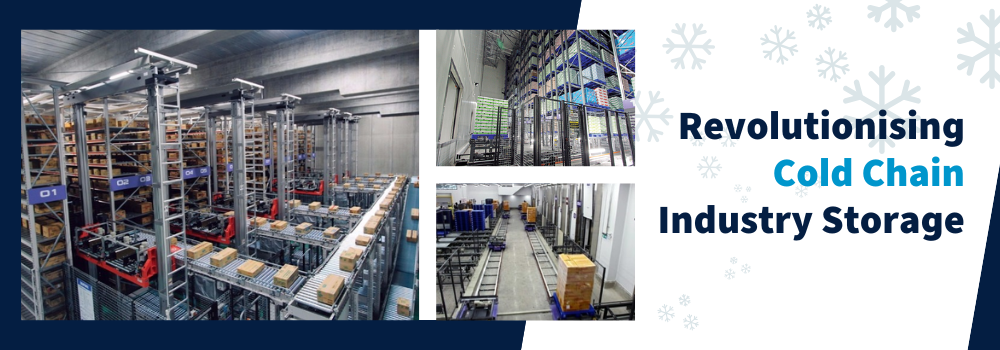
The role of AS/RSs and STVs
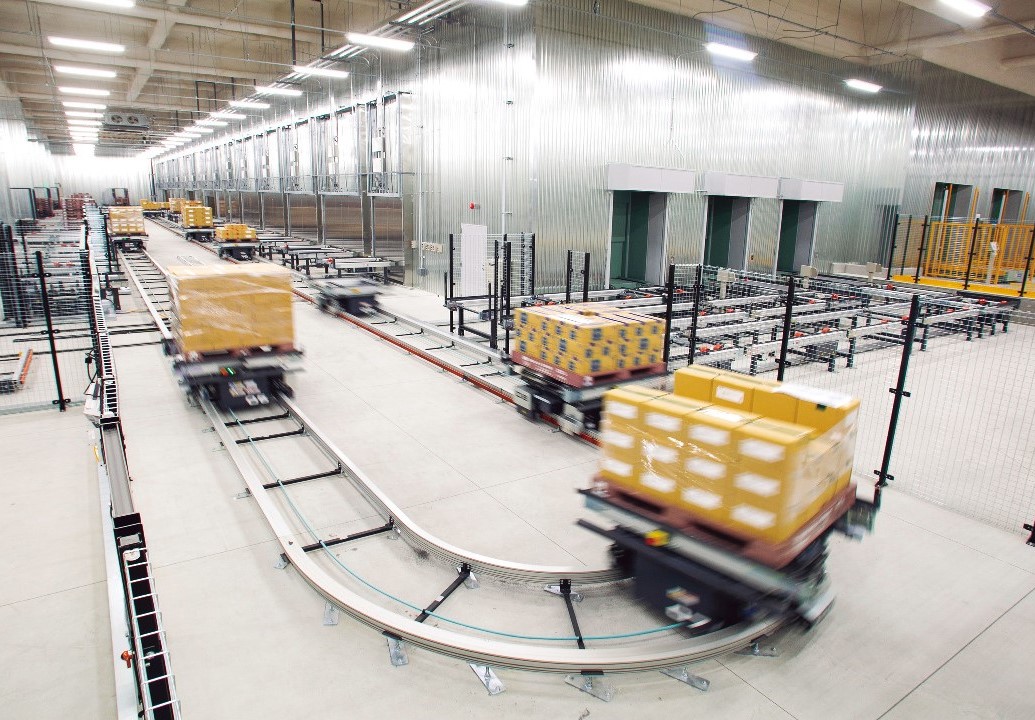
A recurrent theme within the cold storage sector revolves around effectively accommodating an ever-growing range of goods within restricted space. The array of frozen food SKUs and the shift toward smaller orders exacerbate the challenge of storing required volumes using traditional fixed racking and floor storage methods.
As we‘ve witnessed throughout the industry on a global scale in recent times, building resiliency into the supply chain has emerged as a critical concern, further encouraging retailers to mitigate against the risks of infrastructure and environmental risks.
In the ever-evolving landscape of industrial technology, the cold chain industry is a prime example of adaptation and innovation. With the demand for efficiency, speed, and precision rising steadily, warehouse automation has emerged as a transformative solution. Among the arsenal of automation tools, automated storage and retrieval systems (AS/RS) and Sorting Transfer Vehicles (STVs) have become pivotal in revolutionising the storage processes within the cold chain industry.
Unique challenges and opportunities
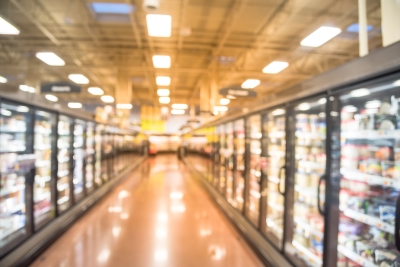
The cold chain industry encompasses a wide array of products, including perishable goods such as dairy, frozen foods, and fresh produce. Unlike conventional warehousing, cold food storage demands precise temperature control, stringent inventory management, and rapid order fulfilment to maintain product quality and safety standards.
Cold storage facilities serving supermarkets and restaurant chains experience high-mix, small-batch, and fast-turnover inventory. Imperative to this process is the management of goods based on expiry dates, best-before, and delivery information—a continuous flow of pallet storage, retrieval, and picking operations based on specification.
Traditionally, cold food storage facilities relied heavily on manual labour for tasks like picking, packing, and inventory management. However, this approach often led to inefficiencies, increased labour costs, and a heightened risk of errors. With the advent of automation technologies, the industry has witnessed a transformation towards more streamlined and optimised operations.
AS/RSs: maximising efficiency and space utilisation
AS/RSs are a cornerstone of warehouse automation, offering unparalleled efficiency in storage and retrieval operations. These systems utilise a combination of storage racks, automated shuttles, and cranes to store and retrieve goods with precision and speed, focusing on high volume and storage efficiency.
In the context of the cold chain industry, AS/RSs offer several key advantages:
- Temperature control
- AS/RSs are designed to operate seamlessly within cold storage environments, ensuring that temperature-sensitive goods remain preserved throughout the storage and retrieval process.
- Optimised space utilisation
- By utilising vertical space more effectively, AS/RSs enable cold chain warehouses to maximise storage capacity without expanding their physical footprint. This is particularly crucial in urban areas where space is limited, and land costs are high.
- Enhanced inventory management
- AS/RSs are equipped with advanced inventory tracking and management capabilities, allowing warehouse managers to monitor stock levels in real-time and optimise inventory rotation to minimise waste.
- Increased throughput
- With automated retrieval processes, AS/RSs significantly reduce the time required to fulfil orders, improving overall throughput and customer satisfaction.
-
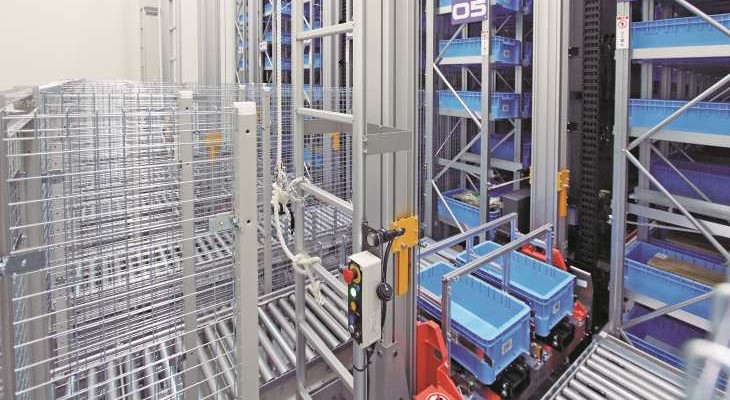
A food logistics provider using a mini load to store totes
-
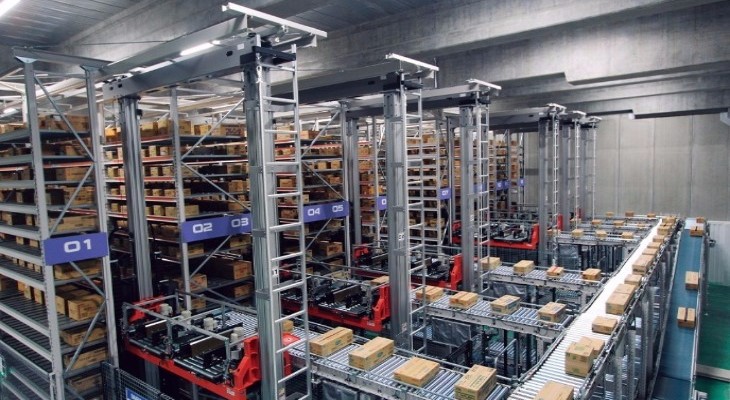
Mini Load AS/RS stores cases for a Japanese cold chain logistics provider
-
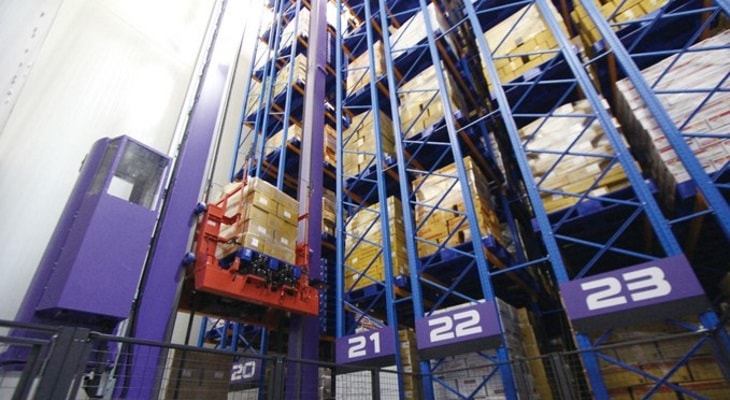
Unit Load AS/RS used by a Thai food manufacturer
Sorting Transfer Vehicles (STVs): navigating the cold storage terrain
In addition to AS/RSs, Sorting Transfer Vehicles (STVs), a rail-guided transport system, play a vital role in enhancing the efficiency and flexibility of cold chain warehouse operations. STVs are capable of transporting goods between storage racks and picking stations with minimal human intervention.
Here‘s how STVs are transforming cold food storage:
- Dynamic storage access
- STVs seamlessly transport goods to and from an AS/RS. The system can autonomously navigate through narrow aisles and tight spaces to deliver pallets at drop-off point where the AS/RS can retrieve them for storage. This flexibility allows for faster retrieval times and smoother workflow orchestration.
- 2. Collaborative operation
- STVs can work in tandem with human operators and other automated equipment, such as robotic arms and conveyor systems, to streamline the entire order fulfilment process. This collaborative approach optimises resource utilisation and minimises bottlenecks.
- Enhanced working environments
- By delivering goods to operators, picking tasks can be carried out in well-lit, secure, and comfortable temperatures. This increases staff well-being and satisfaction and provides safer and more productive operations.
- Scalability and modularity
- STVs are inherently scalable, allowing cold chain warehouses to expand their automation capabilities incrementally as demand grows. This modular approach to automation ensures that investments remain flexible and aligned with evolving business needs.
-
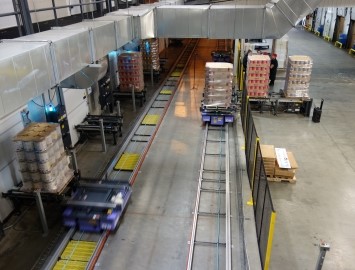
An STV loop used by and ice cream manufacturer
-
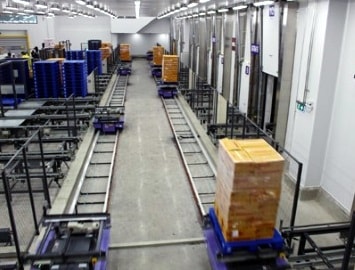
A Thai-based agro-industrial and food manufacturer using an STV loop
-
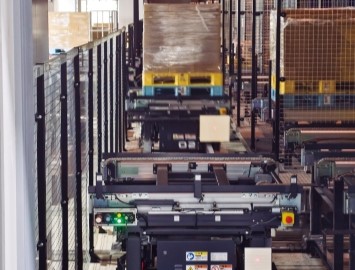
STVs used by a 3PL focusing on services for major restaurant chains in Japan
Pioneering a new era of efficiency and reliability
The integration of AS/RSs and STVs represents a paradigm shift in how cold food storage facilities operate. By harnessing the power of automation, these technologies empower warehouses to achieve unprecedented levels of efficiency, accuracy, and reliability.
As the cold chain industry continues to evolve in response to changing consumer demands and market dynamics, the adoption of warehouse automation will undoubtedly play a pivotal role in driving growth and competitiveness. By embracing AS/RSs and STVs, cold chain manufacturers and distributors can position themselves at the forefront of innovation, delivering fresher products faster and more efficiently than ever before.
Daifuku has been providing logistics systems for cold storage environments to a wide range of customers since 1973. Speak to one of our specialist team as to how we assist in transforming your operations.
Cold chain experience
With over 50 year's of cold chain experience, we know how to deliver success to our customers. Read some of our cold chain success stories on the Case Studies section of the Daifuku website, including Vinamilk, Daiichi Storehouse & Refrigeration, and Charoen Pokphand Foods, among others.
Daifuku Oceania
Daifuku Oceania is a regional leader in automated material handling solutions and a proud member of the Daifuku Group. Originally founded in 1993 as BCS Group Ltd., the company joined the Daifuku Group in 2014 and rebranded to Daifuku Oceania in 2020. Headquartered in Auckland, New Zealand, Daifuku Oceania delivers end-to-end solutions across both our Intralogistics and Airport Technologies business units. The company provides sales, engineering, installation, and after-sales services, with operational offices in Australia and Malaysia, and manufacturing facilities in both countries.
